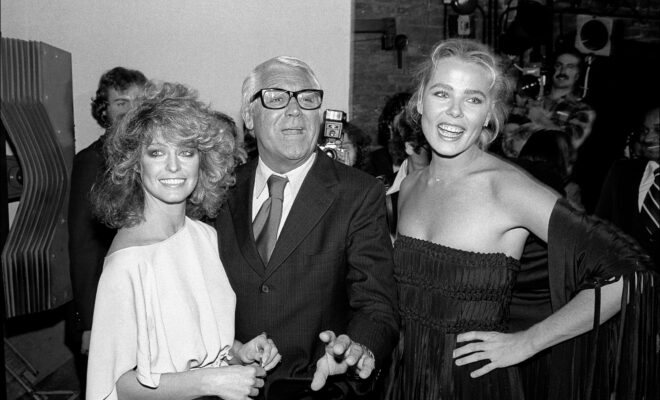 Courtesy Alan Tanenbaum
Courtesy Alan Tanenbaum
GOWEHO INDUSTRY
Outfest: ‘Studio One Forever’ Explores Landmark’s Legacy
It was a landmark building and a landmark time, says a voice at the start of “Studio One Forever,” a documentary from writer-director Marc Saltarelli, screening Tuesday, July 18, at Outfest.
One looming question throughout the film is whether or not the Studio One building, which housed the country’s first major disco and legendary gay nightclub in West Hollywood, is worthy of preservation. Originally built in the 1920s as a manufacturing plant for motion picture cameras used during Hollywood’s Golden Age, the factory then played a role in WWII as a munitions factory.
For those who don’t believe the building alone warrants preservation (one person in the film referred to it as “an eyesore”), most who lived to tell about its historical significance recall the heyday of Studio One and the Backlot performance room—depicted with wonderful photos and footage in the film–with reverence and affection.
Many believe that by preserving the building they will preserve “the memory of what happened.”
The film, narrated by writer-performer Bruce Vilanch, explains why the 19 years
.

that Studio One existed were incredibly impactful one for LGBTQ people.
Initially, the club was a huge, fun dance party, opened in 1974 exclusively for gay men.
Some former staff and performers criticize policies in place to restrict admission of women and racial minorities (even though one of the co-owners was Black).
Vilanch, also interviewed in the film, described going to Studio One as “like walking into a roomful of Prince Charmings.” But then he had to ask, “where’s everyone else?”
When the Backlot opened in 1975, the groundbreaking performance space featured entertainers from Chita Rivera and Eartha Kitt to Phyllis Diller and Roslyn Kind, who shares some interesting memories in the film.
A who’s who of Hollywood elite poured into the club, from Bette Davis (pictured at The Backlot, right) to Bette Midler, as well as Gregory Peck, Kirk Douglas, Olivia DeHaviland, Zsa Zsa Gabor, Burt Reynolds and Dinah Shore, Elton John and Fred Astair.
.

Former patrons of the dance club—including this writer—might see the film as a nostalgic reminder of the youthful energy, excitement and uniqueness of Studio One. It delivered a joyride fueled by music and dancing, a block-party atmosphere with an ”anything is possible” vibe.
It was also a place where closeted gay men living secret lives could burst through the doors unrestrained, without fear of punishment, and experience a place of acceptance, community and fun.
By the 1980s, the AIDS health crisis began spreading across the globe. The network created within the walls of Studio One became the foundation for community activism, taking on a “plague” that the U.S. Government chose to ignore. The film states, with the help of interviews with her daughter Melissa, that Joan Rivers was among the first to take a courageous stand with the gay community, hosting a major fundraiser at the club despite death threats.
Former West Hollywood Mayor and City Councilmember John Duran is among a handful of now middle-aged men who are the tour-guides to the past, taking us down the memory lane of drugs, sex and disco, as well as its aftermath. He said that from 1981-1995, West Hollywood alone lost 10,000 people to AIDS.
But much of the “Studio One Forever” focuses on the way the club fulfilled the vision of its founder, Scott Forbes, to become an oasis of fun and freedom for gay men. Those of us who lived through that era understand the fear and repercussions that accompanied a gay lifestyle when Studio One opened in 1974, and how some political forces are trying to revive that scorn for LGBTQ people today.
But the club emerged as a force that everyone—celebrities included–wanted to be a part of.
And revisiting its heyday helps us to understand why a simple building can exist as a monument for something that should be and needs to be remembered.
“Studio One Forever” screens at the Harmony Gold theatre Tuesday, July 18, 2023. Tickets are sold out, but standby is available. Watch for future festival screenings. For information on this and other films screening at Outfest and for its virtual platform, click here.
Photos above courtesy of “Studio One Forever.” Top: Farrah Fawcett, Cary Grant, Margaux Hemingway at The Backlot; center: Studio One promotion; bottom: Bette Davis at The Backlot.
.








You must be logged in to post a comment Login